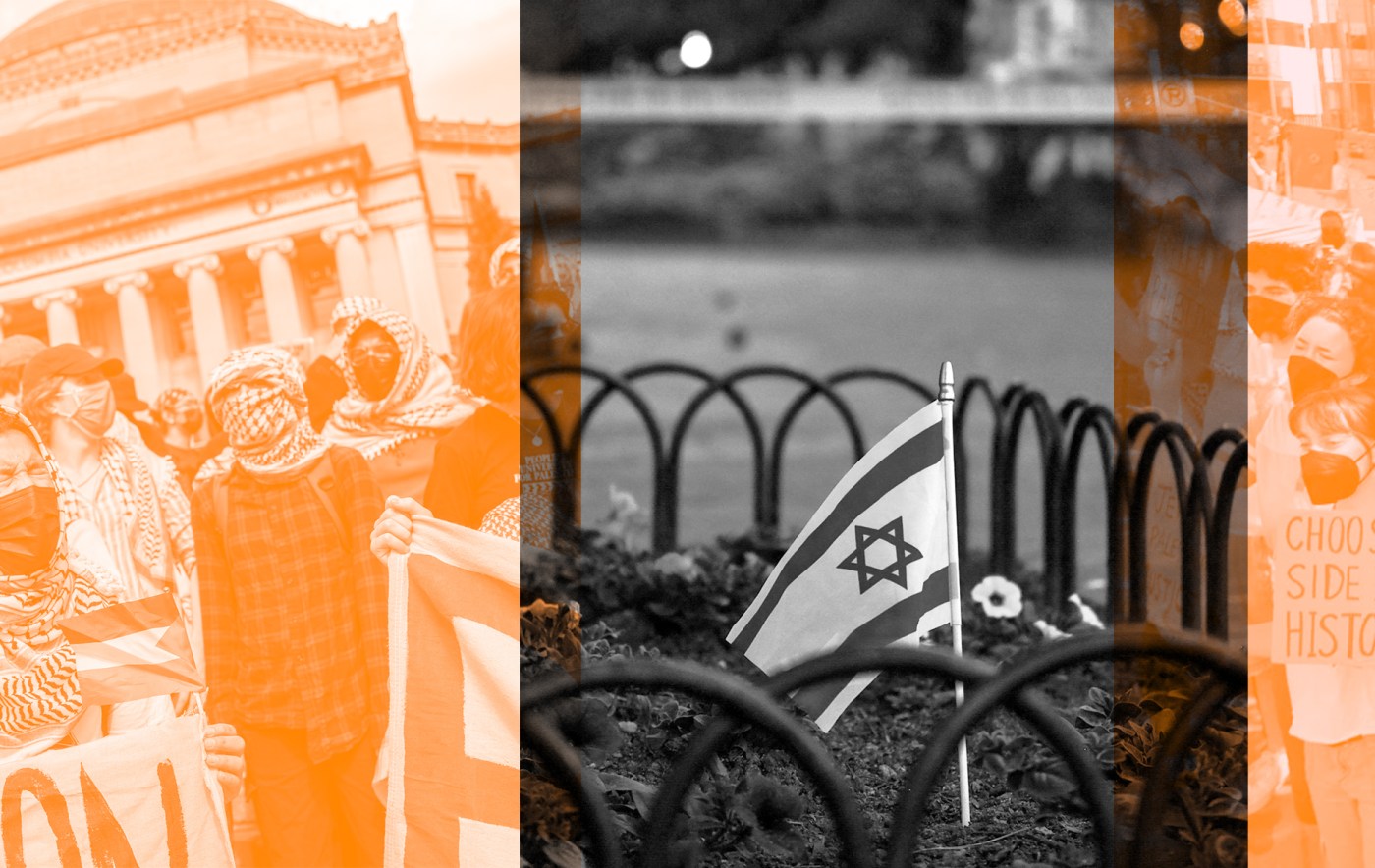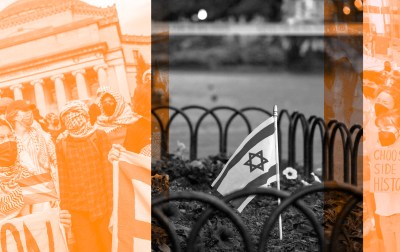Last Sunday, Mohamed Soliman, a 45-year-old illegal alien from Egypt, lobbed Molotov cocktails into a group of people in Boulder, Colorado. He did so, he later told police, because of his hatred for these “Zionists,” who were peacefully marching to demand the release of Hamas’ hostages in Gaza.
Soliman’s attack follows the murder of Israeli embassy aides Yaron Lischinsky and Sarah Milgrim two weeks ago, and the April firebombing of Pennsylvania Gov. Josh Shapiro’s home by an antisemitic madman. How did we get here? Is there some connection between the broader anti-Israel protest movement, with its encampments and provocative chants, and the violent tumult of the past two months?
Mass protest and attempted murder are, of course, totally distinct at a moral and legal level. But it is nonetheless impossible to observe the last two years of agitation by the “pro-Gaza” movement and not see some connection. The ideas and slogans that the movement advanced are clearly predicates of the violence that Soliman and others carried out. A steadily grinding radicalism ratchet brought us to this moment, and did so consistent with the principles of extremist activism.
Most of us see a clear difference between peaceful speech or protest and disruptive or violent criminality. But there is a long tradition on the radical left that regards these actions as part of a singular spectrum of political behavior. Political violence, in this view, is justified by the same principle as political speech: They are both valid insofar as they are a means of resisting oppression.
This idea stretches back to the 19th century, when anarchists in Europe and the United States acted out what was called the “propaganda of the deed”—bombing campaigns meant to inspire the people to revolutionary consciousness. During the late 1960s and early 1970s, American radical groups like the Weather Underground and Black Liberation Army carried out bombings and violent attacks, which they saw as a continuation of—rather than a break with—the civil rights struggle of the 1960s. Then-influential figures like Malcolm X and Howard Zinn argued that non-violence cannot always achieve necessary social change, and that sometimes more aggressive action is required. Groups ranging from the environmentalist terrorists to the anarchists of the 1990s helped carry this tradition into the present day.
The pro-Palestinian/anti-Israel movement cannot be properly understood without this framework. Members of Hamas and the Popular Front for the Liberation of Palestine (PFLP) consider violence an essential part of liberation; Hamas’ declaration of principles describes “armed resistance” as the “strategic choice for protecting the principles and the rights of the Palestinian people.” And for decades, violence—in the form of the destruction of the “Zionist entity”—was the goal of most Arab states. While Arab-Jewish relations have partly thawed in the post-Camp David/Abraham Accords world, the eliminationist agenda still bubbles below the surface of much organized activism, as well as throughout the broader Middle East—especially in Iran’s sphere of influence.
Many insist, of course, that the cause of peace in Gaza does not require a belief in the destruction of the Jewish state, never mind an endorsement of violence per se. In a sense, that’s correct. But otherwise peaceful protests, if sufficiently radical in content, can very easily serve as the first step toward more violent action.
For radical activists, speech often provides cover for violence. Peaceful protesters can advance an extreme case, then disclaim its implications—leaving others to take chants and slogans to their logical endpoints. This is part of the “diversity of tactics” doctrine, the idea that different groups within a protest movement should be allowed to pursue different kinds of activity—from peaceful protest to violence—in order to obtain their ends.
In the “diversity of tactics” framework, more and less aggressive groups work together in a decentralized, unorganized fashion, indirectly supporting one another while helping peaceful actors maintain plausible deniability. During the infamous 1999 World Trade Organization protests in Seattle, for example, standard protesters worked alongside “black bloc” anarchists who smashed windows and threw bricks; subsequent movement writing identifies this as an example of decentralized coordination toward a shared end.
How does this work in the anti-Israel movement? Consider the slogans that campus encampment denizens were taught two years ago. Students across the country chanted, “From the river to the sea, Palestine will be free!” and, “There is only one solution, intifada, revolution!”
The violent implications of these rallying cries are obvious. The liberation of Palestine from the Jordan River to the Mediterranean Sea would mean the elimination of Israel, a territorial agenda explicitly endorsed by Hamas’ guiding principles that would require the forcible removal of—or even the extermination of—millions of Israelis. The First (1987-1993) and Second (2000-2005) Intifadas, on the other hand, were two periods of extended protest and terrorist attacks in Israel; together, they resulted in thousands of Israeli and Palestinian deaths.
Some insist that the phrases are ambiguous: They could refer to violence, sure, but also to peaceful protest; “context” is needed. And most students didn’t really know what they were calling for: A poll commissioned in late 2023, for example, found that less than half of those on campus who endorsed the sentiment of “from the river to the sea” could actually identify which river and which sea they were talking about.
This ambiguity, though, is the whole point: Otherwise peaceful students advocating for “intifada” lend moral legitimacy to those who actually do the “uprising.” They can, in other words, help launder radicalism while maintaining plausible deniability, in their own eyes and in others’. But those chants endorsing violence don’t just disappear into the void; eventually, some protesters who started out peaceful will think through the implications of their views and escalate to more “diverse” tactics. As writer Najma Sharif infamously wrote on October 7, 2023, “What did y’all think decolonization meant? vibes? papers? essays? losers.”
Could such talk really influence action? At Swarthmore, the Students for Justice in Palestine (SJP) chapter celebrated the anniversary of October 7, referring to “this glorious day and all our martyred revolutionaries.” The national SJP umbrella organization endorsed “armed confrontation with the oppressors” in the immediate aftermath of October 7. At Columbia, the student anti-Israel organization, Columbia University Apartheid Divest, called for the “total eradication of Western civilization”; one recently indicted Columbia protester, though not actually a student, was apparently in a Hamas-linked group chat.
Then there are the teachers. Consider, for example, the Princeton professor who helped students occupy the university’s Clio Hall in an incident that led to 13 arrests. Or take the Yale Law School scholar who was fired following an investigation into her alleged links to Samidoun, a “sham” charity that funnels funds to the PFLP. At Northwestern, negotiations with student occupiers recently led to the hiring of two Palestinian professors—one of whom, it turns out, is on the board of two separate “human rights” organizations with ties to both Hamas and the PFLP.
Once the argument has been made, at sufficient volume, that more extreme tactics might be justified, someone will inevitably take the bait. Consider, for example, the repeated building takeovers on college campuses, or the bridge and tunnel closures effected by activists. These behaviors are not violent, but they are illegal. And they draw their participants—and obtain their legitimacy—from the broader movement. If you believe that a “genocide” is happening in Gaza, that liberating Palestine is an essential political project, and that “Intifada” is proportional to the situation, then why not step beyond the boundaries of the law?
The larger movement will disclaim these behaviors, of course—and some of its participants will agree with the disclaimer. But the people who smash windows, or block bridges, or murder innocent people, are simply acting out the principles that the larger movement is constantly mouthing, even as they insist otherwise.
Consider, for example, Elias Rodriguez, currently charged with the murder of Lischinsky and Milgrim. In his purported manifesto, which I will not link to, Rodriguez justifies the murders by reference to the ongoing “genocide” in Gaza, and specifically the social media videos of destruction that have been so radicalizing to not only him, but thousands of young Americans.
“I am glad that today at least,” the manifesto reads, “there are many Americans for which the action [the murders] will be highly legible and, in some funny way, the only sane thing to do.”
Rodriguez is correct. For those who have embraced the fundamental claims of the anti-Israel movement—that Israel is engaged in a genocide, not a war; that Hamas’ actions are either irrelevant or affirmatively good; that the “liberation” of Palestine has never been more urgent—the idea that you should commit crimes, even murder, to stop the conflict can start to feel like “the only sane thing to do.”
But, of course, it isn’t sane. A set of principles that leads activists to commit brutal murders and firebomb peaceful marchers has to be rotten from the roots up.
It’s neither possible nor desirable to directly suppress radical speech. But the government can and should aggressively punish “minor” protest-related activity, like vandalism or trespassing; investigate extremist groups that endorse violence; and prosecute offenders like Rodriguez and Soliman to the fullest extent of the law.
Most importantly, we need to start recognizing that the sort of violence we are now seeing has long been baked into the American anti-Israel movement. Bracket the merits of the war in Gaza; here, at home, activists have moved predictably from endorsements of criminality and violence to actual criminality and violence. Stop letting them claim otherwise—it’s already cost too many lives.







Please note that we at The Dispatch hold ourselves, our work, and our commenters to a higher standard than other places on the internet. We welcome comments that foster genuine debate or discussion—including comments critical of us or our work—but responses that include ad hominem attacks on fellow Dispatch members or are intended to stoke fear and anger may be moderated.
With your membership, you only have the ability to comment on The Morning Dispatch articles. Consider upgrading to join the conversation everywhere.